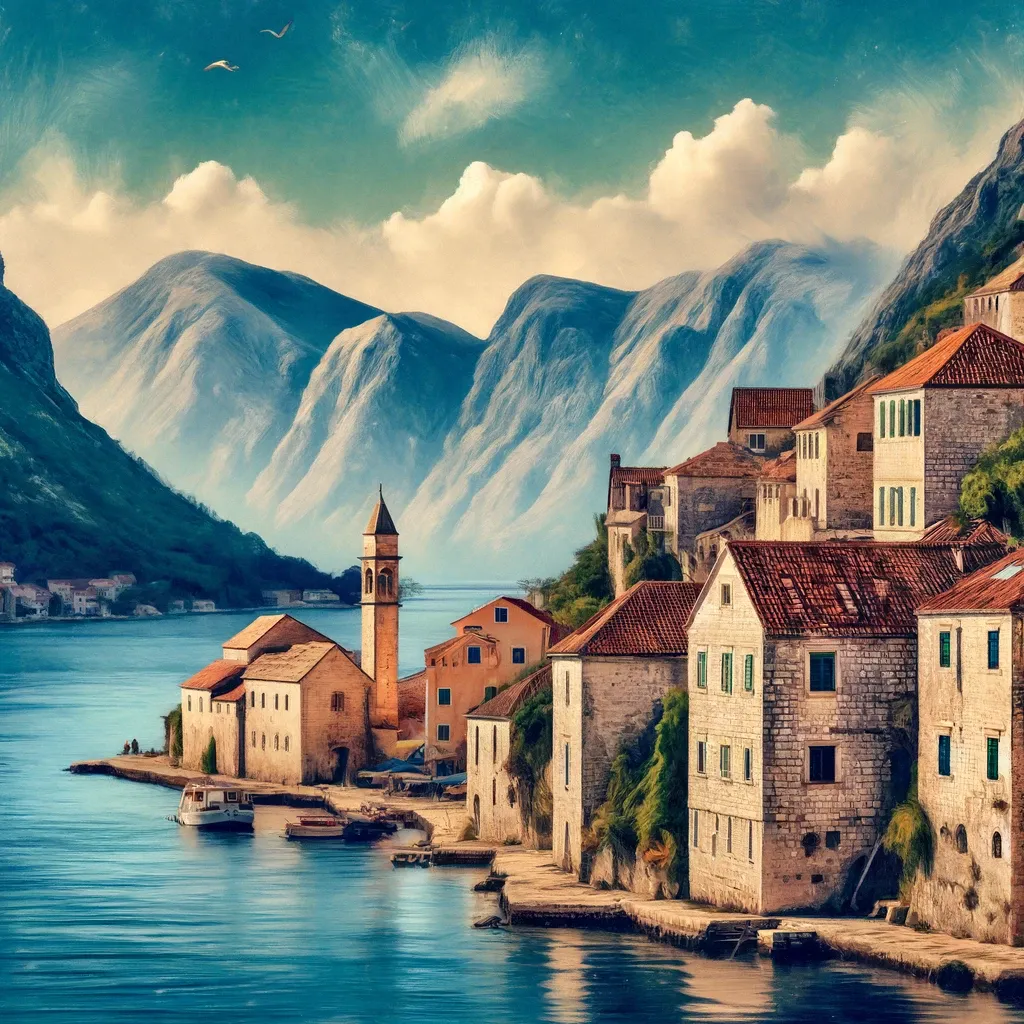Natural and cultural region of Kotor

The natural and cultural-historical region of Kotor is located in the Bay of Kotor on the Adriatic Sea coast in Montenegro. This unique region encompasses the best-preserved part of the bay, covering its southeastern interior. It includes 14,600 hectares of land with a landscape consisting of two interconnected bays surrounded by mountains rising nearly 1,500 meters. The region is linked to the rest of the Bay of Kotor through a narrow channel, which serves as the main visual axis of the area. The distinctive universal value of the cultural-historical region of Kotor is manifested in the architecture of its fortified and open towns, villages, palaces, and monastery ensembles, as well as their harmonious integration into the terraced landscape on the slopes of high rocky hills. The Kotor region bears unique testimony to the exceptionally important role it has played over the centuries in the spread of Mediterranean cultures to the Balkans.
Criterion (i):
The monuments of the cities are gathered along the bay's coastline, and their harmony with the landscape, along with their significant contribution to urban planning, enhances the unique universal value of the property.
Criterion (ii):
Like the main bridgeheads of Venice on the southern Adriatic coast, the aristocratic cities of captains and shipowners in Kotor and its neighbors have been the heart of the region's creative movement for centuries.
Criterion (iii):
The successful harmonization of these cities with the bay, their quantity, quality, and diversity of monuments and cultural values, as well as the exceptional authenticity of their preservation, means that the property can be effectively regarded as unique.
Criterion (iv):
Kotor and Perast are characteristic and authentically preserved small towns, transformed by high-quality architecture. Their urban planning is well adapted and integrated into the landscape.
At the same time, the overall integrity of the historical distribution of landscapes with cities and towns, characterized by urban planning that has developed along the entire coastline of the bay, separated by green and cultivated areas framed by steep rocky hills, and a narrow zone of urbanized coastline connected by the sea, is preserved. However, the conditions for this integrity are under threat due to development and urbanization driven by ongoing transformation processes in the region's socio-economic structure. The need to maintain the integrity of the property and its designated buffer zone will be crucial for preserving the property and its integrity as a unique cultural landscape and entity in geographical, historical, and cultural terms. The implementation of regulatory measures for the buffer zone and the development of an integrated approach to conservation, planning, and management of the region as a whole will also be necessary.
Truthfulness
Despite the serious damage caused by the earthquake in 1979, the main monuments and historical urban areas were carefully restored and reconstructed with the involvement of UNESCO, preserving their architectural, urban planning, and historical authenticity.
At the time of its inclusion on the heritage list immediately after the 1979 earthquake, the protection, restoration, and management of cultural monuments and historical urban areas of the Bay of Kotor were guaranteed by the Institute for the Protection of Cultural Monuments of the Republic of Montenegro. After the 1979 earthquake, the management of the entire region was carried out under the South Adriatic Development Plan, which was developed with the assistance of the United Nations Development Programme (UNDP). The programs included the preservation, presentation, and rehabilitation of cultural monuments in the old towns and settlements. At the same time, industrial enterprises (4 factories) that were incompatible with the character of the property were removed.
If we trace the history of the management of the site, we can note significant improvements in the preservation and management of the monuments and historical centers of Kotor and Perast. However, it is necessary to raise awareness about considering the inscribed property and its buffer zone as an integral part of the unique cultural landscape of the Bay of Kotor. There are challenges in further defining common development strategies for the property and its buffer zone, for integrated planning, and for creating a unified management system. These measures will be essential to ensure that uncontrolled and excessive urbanization, as well as infrastructure development, are properly accounted for to avoid negative impacts on the unique universal value of the property. It is also necessary to provide sufficient resources to the organizations responsible for the property to promote its conservation, protection, and enhancement.
Comment
Popular Posts
Popular Offers

Subscribe to the newsletter from Hatamatata.com!
Subscribe to the newsletter from Hatamatata.com!
I agree to the processing of personal data and confidentiality rules of Hatamatata














